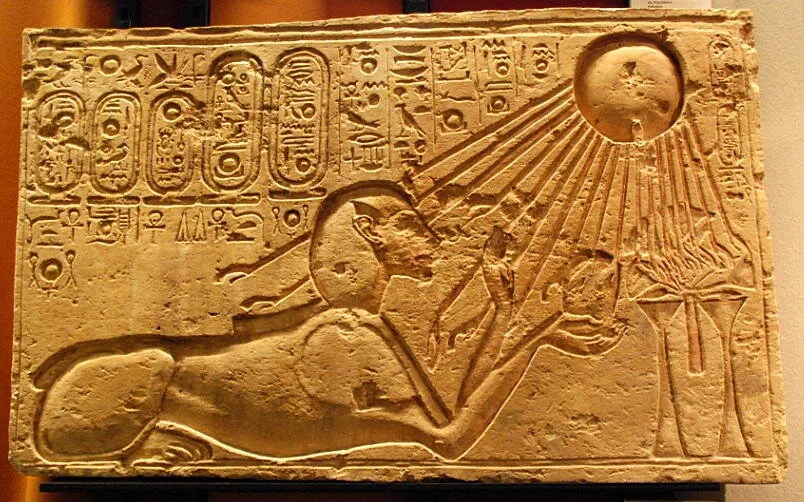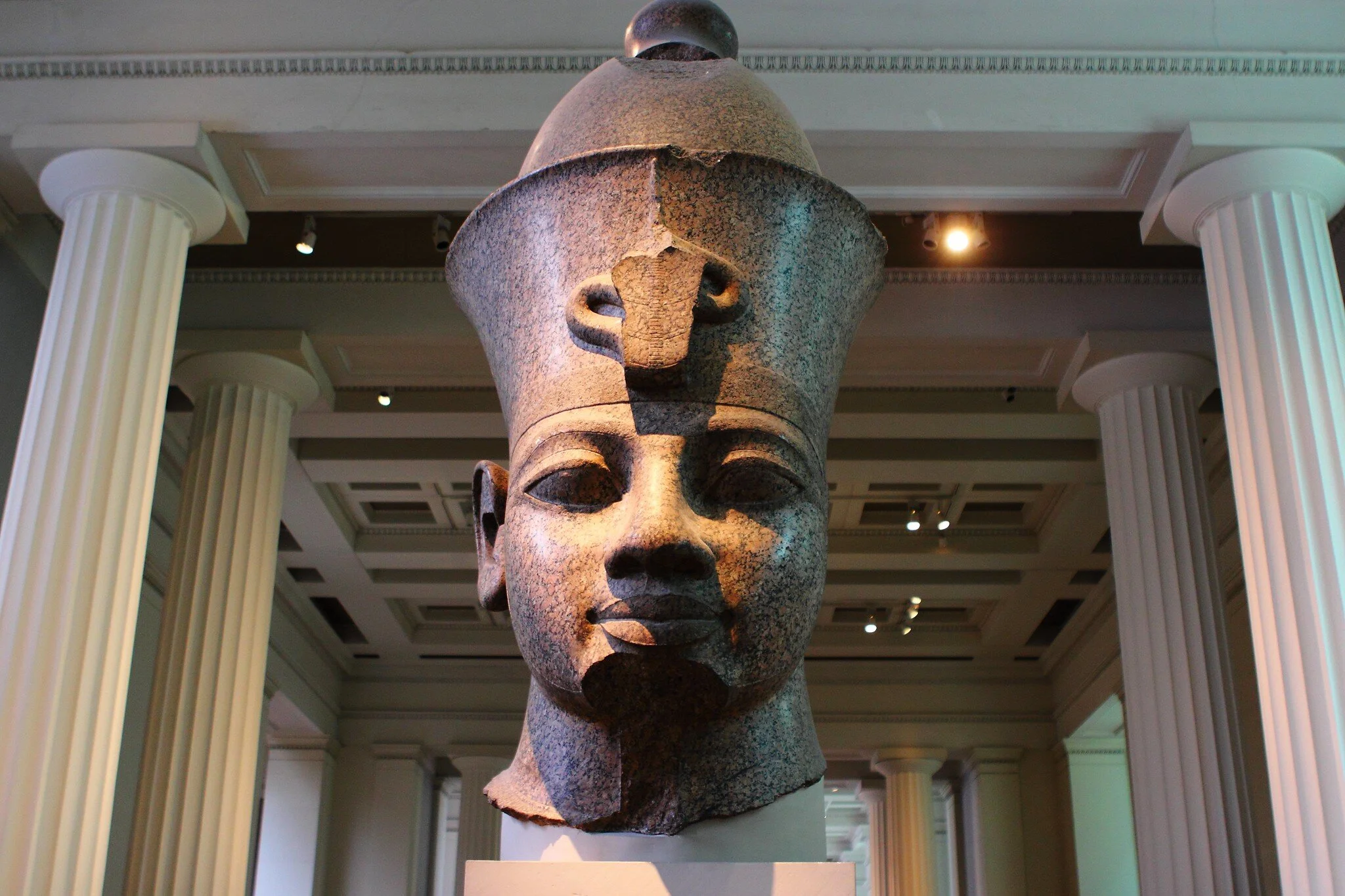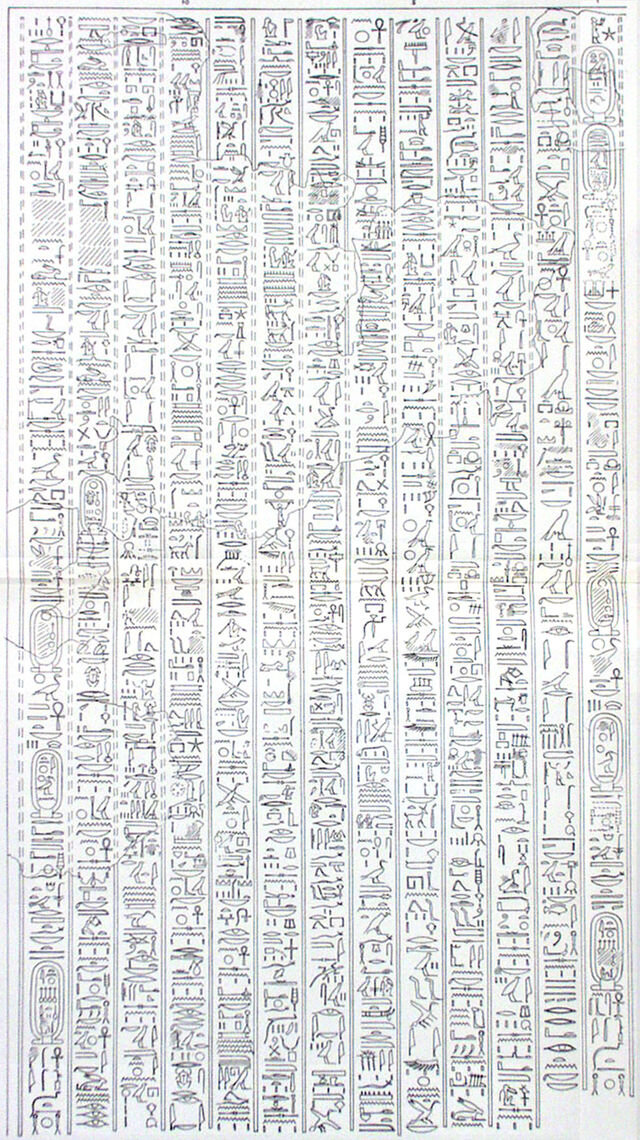The world’s first monotheistic religion wasn’t Judaism — it happened in Ancient Egypt during what’s known as the “Amarna heresy.”
Oh my gods! Everyone knows that Ancient Egypt was polytheistic, with a troupe of animal-headed gods that were worshiped for thousands of years. And it’s true. Ancient Egypt was polytheistic — except, of course, for those 20 years or so when it wasn’t.
Many of us thought that the Jews were the first monotheists in history. But sometime early in his reign, from 1353-1336 BCE, the Egyptian Pharaoh Akhenaten upended centuries of polytheistic practices and decreed that there was only one god: the sun itself.
“Ancient Egypt was polytheistic — except, of course, for those 20 years or so when it wasn’t.”
Sun worship started with his father, Pharaoh Amenhotep III, who identified himself with a minor god, the Aten, elevating it to the status of a favored god and personal deity.
Amenhotep III might have initiated the intense worship of the Aten that took over his son, the pharaoh who became Akhenaten
Like Father, Like Sun
After Amenhotep III died, his son ascended the throne under the name Amenhotep IV, which meant The God Amun Is Content. But the pharaoh, in the fifth year of his reign, changed his name to Akhenaten, He Who Is Effective on the Aten’s Behalf, when he became convinced that the Aten was the one true god.
Egyptologists never fail to point out that the Aten is the “solar disc,” though I’m not sure how that differs from just saying that they worshipped the sun.
Gerhard Fecht, who taught Egyptology at the Free University of Berlin and who died in 2006, noted the similarity of the pronunciation in ancient times of Aten (“yati”) and father or forefather (“yata”), which he believed was far from a coincidence. Akhenaten styled himself as the son of the sun and the father of his people, and he believed that he would merge with the sun in death.
Wally and Duke are particularly partial to the Amarna style of art, as shown in this statue of Akhenaten
The Upsides of the So-Called Amarna Heresy
History hasn’t looked favorably upon Akhenaten, deeming him “the Heretic King” for having the gall to shift Ancient Egypt from polytheism to monotheism for a short period and for moving the capital from Thebes to a new city, Akhentaten, now referred to as Amarna.
There’s much to admire about this fascinating ruler, though. For one thing, he created a new style of art — strangely captivating genderbending statuary on the one hand and paintings that convey an intimate realism on the other — when the rest of the three millennia of Ancient Egypt had a remarkably stagnant style. If we can believe the artwork (and we have every reason to be skeptical, since imagery was used for propagandist purposes throughout the ancient kingdom), Akhenaten was utterly devoted to his queen Nefertiti.
We’re also led to believe that Akhenaten doted on the six — count ’em, six — daughters he had with Nefertiti. Most pharaohs would have been disappointed by not having at least one son who could become heir to the throne, but Akhenaten was so enamored of his daughters, he included depictions of them in the artwork he commissioned — an uncommon practice for the time.
There’s evidence that The Hymn to the Aten influenced one of the Psalms in the Bible
The Great Hymn to the Aten
This controversial pharaoh was a man who loved nature, waxing poetic in the Great Hymn to the Aten, which it’s believed he wrote himself. This poem begins:
For you are risen from the eastern horizon and have filled every land with your beauty;
For you are fair, great, dazzling and high over every land,
And your rays enclose the lands to the limit of all you have made;
For you are Re, having reached their limit and subdued them for your beloved son;
For although you are far away, your rays are upon the earth and you are perceived.When your movements vanish and you set in the western horizon,
The land is in darkness, in the manner of death.
People, they lie in bedchambers, heads covered up, and one eye does not see its fellow.
All their property might be robbed, although it is under their heads, and they do not realize it.
Every lion is out of its den, all creeping things bite.
Darkness gathers, the land is silent. The one who made them is set in his horizon.
Scholars delight in pointing out how similar the Bible’s Psalm 104 is to the second stanza. It’s not too far-fetched to accuse the Psalm author, who wrote hundreds of years after the Aten hymn, of plagiarism.
Akhenaten and Nefertiti, with three of their daughters, basking in the holy rays of the sun, known as the Aten in Ancient Egypt
Who’s Worshipping Whom?
In his book Akhenaten: Egypt’s False Prophet, Nicholas Reeves argues that Akhenaten worshipped the sun, while the populace of Egypt worshiped Akhenaten. He sees the move to monotheism as a political ploy to strengthen the pharaoh’s power. This point is strengthened by the carvings found in the few tombs used outside of Akhentaten: Instead of gods and goddesses, they feature the royal family prominently.
Atenism created a new trinity. Instead of Amun, the father who jerked off to create the twin siblings, his son Shu and daughter Tefnut, you had the Aten, Akhenaten and Nefertiti. In fact, their six daughters rounded out the royal family, providing a new version of the Ennead, the nine gods of creation.
Aten’s temples were open to the air, a striking contrast to previous Egyptian places of worship, notably the dark and mysterious confines of the temples to Amun, known as the Hidden One. Other temples held a small chamber at the back, the sanctuary, or holy of holies, which housed the cult image of the deity. But with the Aten there was no need for a statue — the god could be seen blazing up in the sky, its warmth felt upon the skin during daylight.
A relief from the Karnak Temple shows Akhenaten worshipping the sun. The new religion was probably appealing at first, with its focus on life and beauty instead of death
Eat, Drink and Be Merry
Atenism’s popularity was short-lived, perhaps even beginning to wane while Akhenaten was still alive. But its initial appeal is easy to imagine.
For centuries, Ancient Egyptians were obsessed with death; their great monuments, elaborate spells and mummification rituals were meant to assure a pleasant afterlife. But Atenism focused instead on the here and now, on life on this Earth.
In the past, Egyptian tombs were located on the West Bank of the Nile, most notably the Valley of the Kings. But Akhenaten broke with tradition, designating the eastern hills as the site of the royal tombs and lesser cemeteries. No longer would death be associated with the west and the god Osiris, evoking the sunset and a bleak finality. Instead, death was now connected to the sun that rose from the eastern cliffside, offering light and hope each day.
The Militaristic Move to Monotheism
Most likely in the 10th year of his reign, Pharaoh Akhenaten ceased to tolerate any mention of other gods aside from the Aten, and launched an all-out war against the old deities, Amun and his consort Mut in particular.
“An order went out from the palace to smash up the divine statues and hack out the names and images of these gods wherever they occurred — on temple walls, on obelisks, on shrines, on the accessible portions of tombs,” Reeves writes.
The priesthood of the chief god, Amun, in particular, didn’t fare well under Akhenaten’s decree to worship only one deity: the Aten
The persecution spread to the common people as well. Eye makeup containers and commemorative scarabs from this time have been found with the hieroglyphs for other gods gouged or scratched out.
We don’t just have to take Reeves’ word for how bad things got. Here’s what Manetho, a priest and historian from the Ptolemaic Kingdom in the early third century BCE, wrote about Akhenaten’s monomania:
…not only did they [pharaoh’s men] set towns and villages on fire, pillaging the temples and mutilating images of the gods without restraint, but they also made a practice of using the sanctuaries as kitchens to roast the sacred animals which the people worshipped; and they would compel the priests and prophets to sacrifice and butcher the beasts, afterwards casting the men forth naked.
Upon Akhenaten’s death, his son and successor, King Tut, returned Egypt to polytheism
King Tut Restores the Old Gods
After Akhenaten’s death, his son Tutankhamun’s reign didn’t last long — but did effect major change. Tut brought Ancient Egypt back to polytheism, after his father’s failed experiment. His Restoration Stela paints a bleak picture of how badly things had gotten in such a short time:
…the temples and the cities of the gods and goddesses, starting from Elephantine as far as the Delta marshes … were fallen into decay and their shrines were fallen into ruin, having become mere mounds overgrown with grass. Their sanctuaries were like something which had not yet come into being and their buildings were a footpath [i.e., public] — for the land was in rack and ruin. The gods were ignoring this land. … if one prayed to a god, to ask something from him, he did not come at all; and if one beseeched any goddess in the same way, she did not come at all.
Akhenaten undeniably wreaked havoc upon the social order. His persecution of the gods that had been worshipped for millennia must have greatly unnerved the populace. He created countless enemies by stripping the priests of Amun of their power and stealing their great wealth to build his new capital city. He didn’t concern himself with the military or economics. For all his focus on hope, he left Ancient Egypt in worse shape than when he took the throne.
But his revolutionary religious vision, even if it was self-centered, very well could have planted the seeds of the monotheistic religions that dominate the world today. –Wally




























